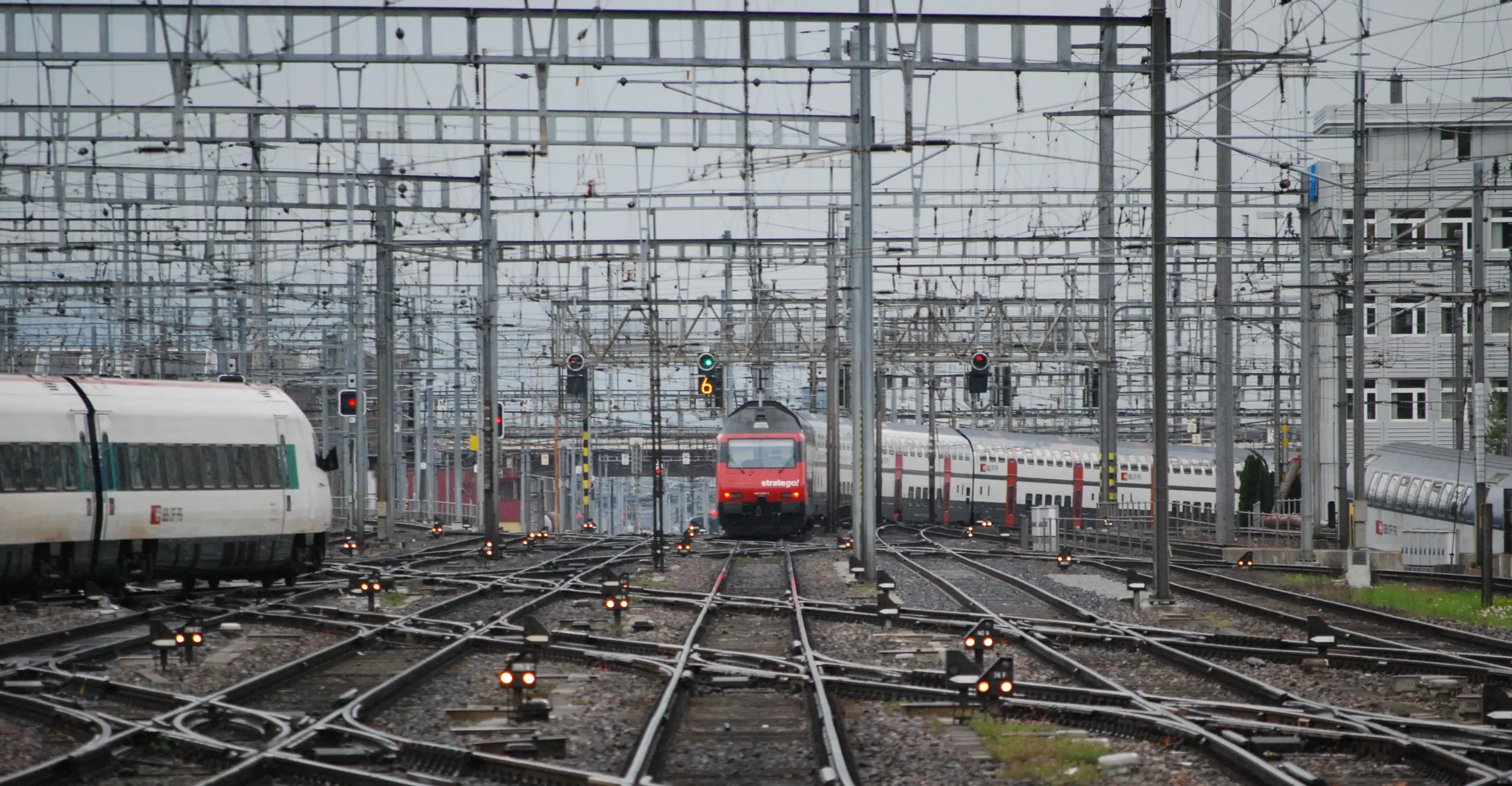Project example: Sinet
Sinet delivers innovation to the rail network
Given the high frequency of train movements over the railway network, communication between signalling centres and railway track is now more important than ever. A system which is not 100 percent reliable cannot adhere to the timetable. The Institute of Embedded Systems (InES) at the ZHAW School of Engineering is working with Siemens on the development of a redundant network technology which is capable of continuing operations even in the event of isolated system failures.
When travelling by train, very few people notice the numerous technical installations located on or near the tracks. They are there to ensure the safe and smooth operation of the rail network. To prevent pile ups and head-on collisions, tracks are subdivided into sections. When a train enters a section it remains blocked to other traffic until the train has left it again. Signals at the beginning and end of a section indicate to the train driver whether a section is in use. When a train enters a section, a sensor on the track records the number of carriages passing over it. This so-called axle counter reports the number of carriages to the signalling centre. The signalling centre then blocks that section of track until a second axle counter at the end of the section confirms that the same number of carriages have passed over it.

“This system is not optimal, because it requires many thousands of kilometres of cabling, which is also prone to faults because there is no back up.”
Professor Hans-Joachim Gelke, Project Manager, Institute of Embedded Systems (InES)
Numerous individual point-to-point connections
The information from the axle counters is transmitted to the signalling centre along cables of the kind used in conventional telephone landline connections. The computer operating the signals is located in the signalling centre. Based on the information it receives from the axle counters, the computer operates the signals which indicate when a section of track is blocked. The information from the signalling centre to the signals is also transmitted by telephone line. “Because every installation has its own connection to the signalling centre, this arrangement is referred to as a star-shaped point-to-point configuration,” explains Professor Hans-Joachim Gelke, who is managing the Institute of Embedded Systems (InES) side of the project. “This system is not optimal, because it requires many thousands of kilometres of cabling, which is also prone to faults because there is no back up.”
“Thanks to network technology, multiple users can share the same cable to a printer. If a similar system were used along the railway tracks, this would reduce the number of cables needed, thus cutting costs and reducing the incidence of faults.”
Professor Hans-Joachim Gelke, Project Manager, Institute of Embedded Systems (InES)
Redundant network technology
The Sinet project, which the InES is developing in conjunction with Siemens, uses modern network technology instead of point-to-point connections. “Network technology is the system used in offices to allow several PCs to be connected to one single printer without each PC needing its own connection to the printer,” explains Gelke. “Thanks to network technology, multiple users can share the same cable to a printer. If a similar system were used along the railway tracks, this would reduce the number of cables needed, thus cutting costs and reducing the incidence of faults.” With Sinet the various technical installations along a railway track share one single cable and are chain-linked to each other. At its beginning and end the chain is connected to a ring loop so that redundant information can be fed into it from both ends. If there is a fault in one of the links in the chain, the other links still receive their information along a second route. In addition to the cost savings it achieves, this system also offers greater reliability.
System successfully passes field tests
Sinet is first scheduled to go into operation in 2014, on the renovated stretch of track through the Töss valley near Winterthur. However, before this real-life inauguration takes place, the system must first prove its reliability in numerous field tests. For that purpose, pure communications tests have been conducted for the last six months or so on the most heavily used stretch of railway track in Switzerland, between Oerlikon and Zurich Airport. “These tests have been carried out without real train traffic and the system has so far performed extremely well,” explains Gelke. An initial pilot phase using real train traffic will start in the autumn in Sevelen. Further tests will also be carried out on the Deutsche Bahn network.
At a glance
Participating institutes and centres:
Project partner:
Financing: financial support by Innosuisse
Project status: completed